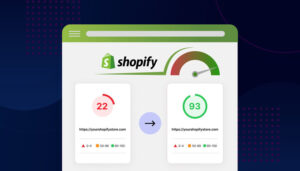Understanding the Shopify Ecosystem
Before diving into the specifics of development challenges, it’s crucial to understand what makes Shopify app development unique. With over 4 million active merchants using Shopify, the platform has rapidly become the go-to e-commerce solution for businesses of all sizes. Shopify allows businesses to integrate custom functionality through apps, but what makes this exciting also makes it challenging: the sheer variety of businesses using the platform, each with unique needs and workflows.
When you’re developing Shopify apps, you’re not just building something for a single business but for a vast array of users with different expectations, operational models, and goals. This diversity requires apps to be flexible, scalable, and, most importantly, user-friendly.
In our experience, this has meant that challenges often arise in areas like user experience (UX), app compatibility, performance, and security. So, how do we tackle these hurdles? Let’s take a deeper look.
Challenge 1: Crafting an Intuitive User Experience

One of the first obstacles we face when developing a custom Shopify app is crafting an intuitive user experience (UX). Shopify merchants come from a variety of backgrounds and technical expertise, so a steep learning curve in your app can quickly alienate users. A key lesson we’ve learned is that simplicity matters, merchants use your app to simplify their processes, not complicate them.
During one of our earlier projects, we built a custom inventory management app for a growing e-commerce store. The app offered a range of powerful features, but it was clear that the interface was overwhelming for users who were not particularly tech-savvy. The result? Lower engagement, frustration, and eventually, customer churn.
Solution: We focused on reducing complexity and improving the app’s flow. We introduced clear, actionable steps with tooltips and visual guides to help users navigate the app with ease. This adjustment didn’t just improve the user experience; it increased overall adoption and usage of the app.
Lesson Learned: Never underestimate the power of simplicity. A user-friendly, clean interface is more valuable than a feature-heavy app that feels difficult to navigate.
Challenge 2: Ensuring App Compatibility with Shopify’s Ecosystem
Another challenge we’ve faced in Shopify app development is ensuring compatibility with other apps and themes within the Shopify ecosystem. With thousands of apps available on the Shopify App Store, it’s inevitable that users will have multiple integrations running simultaneously, each with their own set of requirements. Developing apps that are compatible with a range of third-party tools and themes is no small feat.
For instance, when developing a custom checkout app for one of our clients, we ran into compatibility issues with a popular third-party payment gateway. Our app worked seamlessly on its own, but when combined with the other tool, it caused conflicts that disrupted the checkout process.
Solution: We made sure to conduct extensive testing across various environments. We used Shopify’s development tools and set up an array of test scenarios to ensure that the app worked perfectly in all situations. Additionally, we built clear integration guidelines and documentation to help our clients manage compatibility issues with other apps.
Lesson Learned: Always test your app in various scenarios and environments. Comprehensive testing can save time and frustration in the long run, and compatibility should be one of your primary concerns when building Shopify apps.
Challenge 3: Optimizing App Performance and Load Time

Performance issues are another common challenge in Shopify app development. Slow loading times or laggy functionality can drastically reduce user satisfaction, and in the e-commerce world, that can result in lost sales. One of the first things we focus on during development is ensuring that the app runs efficiently and delivers fast load times, even when handling large amounts of data.
We encountered a performance issue while developing a reporting tool for a client. The app generated reports based on real-time sales data, and the process of generating these reports took far too long. The client was concerned that customers might abandon the page before the report was fully generated.
Solution: We optimized the app by introducing background processing for report generation. Instead of waiting for the report to finish before presenting it to the user, we implemented a system where the user would be notified once the report was ready, allowing them to continue working on other tasks. This not only improved the app’s performance but also enhanced the overall user experience.
Lesson Learned: Performance should always be a top priority. An efficient app leads to better user retention, customer satisfaction, and fewer technical issues down the road.
Challenge 4: Handling Shopify’s API Limitations
Working with Shopify’s APIs is a vital part of app development. However, one limitation that we’ve often encountered is the rate limits and data access restrictions. Shopify’s APIs are powerful, but they can also be restrictive, especially when you’re trying to pull large datasets or perform operations that require more frequent API calls.
In one project, we needed to pull and update a large number of product listings on a daily basis. However, Shopify’s API rate limit didn’t allow us to make all the necessary calls within the time frame we had.
Solution: We employed a queuing system that allowed us to batch API calls. Instead of making numerous requests in a short period, we spaced them out to stay within the rate limits. Additionally, we used Shopify’s webhooks to keep the data synced in real time without hitting the API too often.
Lesson Learned: Understand Shopify’s API limitations and work within those boundaries. By building your app with these limitations in mind, you can avoid performance issues and ensure a smooth user experience.
Challenge 5: Managing App Security and Data Privacy
As with any development project, security is a critical consideration, and Shopify app development is no exception. With sensitive customer data involved, ensuring that your app complies with security best practices is crucial. Shopify has a set of security standards that apps must meet, and it’s essential to follow them carefully to protect merchant and customer data.
We once worked on an app that required collecting and storing customer data for loyalty programs. During the development process, we ensured that all data was encrypted and that we implemented role-based access controls to limit who could view and manage this information. Even with these measures in place, we learned that continuous monitoring and updates are needed to stay ahead of evolving security threats.
Solution: We implemented regular security audits and kept up with Shopify’s latest security guidelines. We also ensured that data privacy compliance, such as GDPR, was taken into account throughout the app’s design and development process.
Lesson Learned: Security is never a one-time fix. It requires ongoing attention to stay up to date with new threats and regulations.
Conclusion: Mastering Shopify app development
Shopify app development is an exciting yet challenging field. From ensuring cross-environment compatibility to optimizing performance and maintaining security, the hurdles can seem daunting. However, each challenge is an opportunity to improve your development practices, learn valuable lessons, and build stronger apps.
By focusing on user experience, testing compatibility, optimizing performance, understanding API limitations, and ensuring security, we’ve overcome these obstacles to deliver high-quality Shopify apps. Whether you’re developing a custom app for your store or creating solutions for clients, these lessons will help you build more efficient and user-friendly apps.
Looking for expert Shopify app development? At Frontlevels, we can help you navigate these challenges and create solutions that drive results. Let’s turn your ideas into a seamless e-commerce experience.






